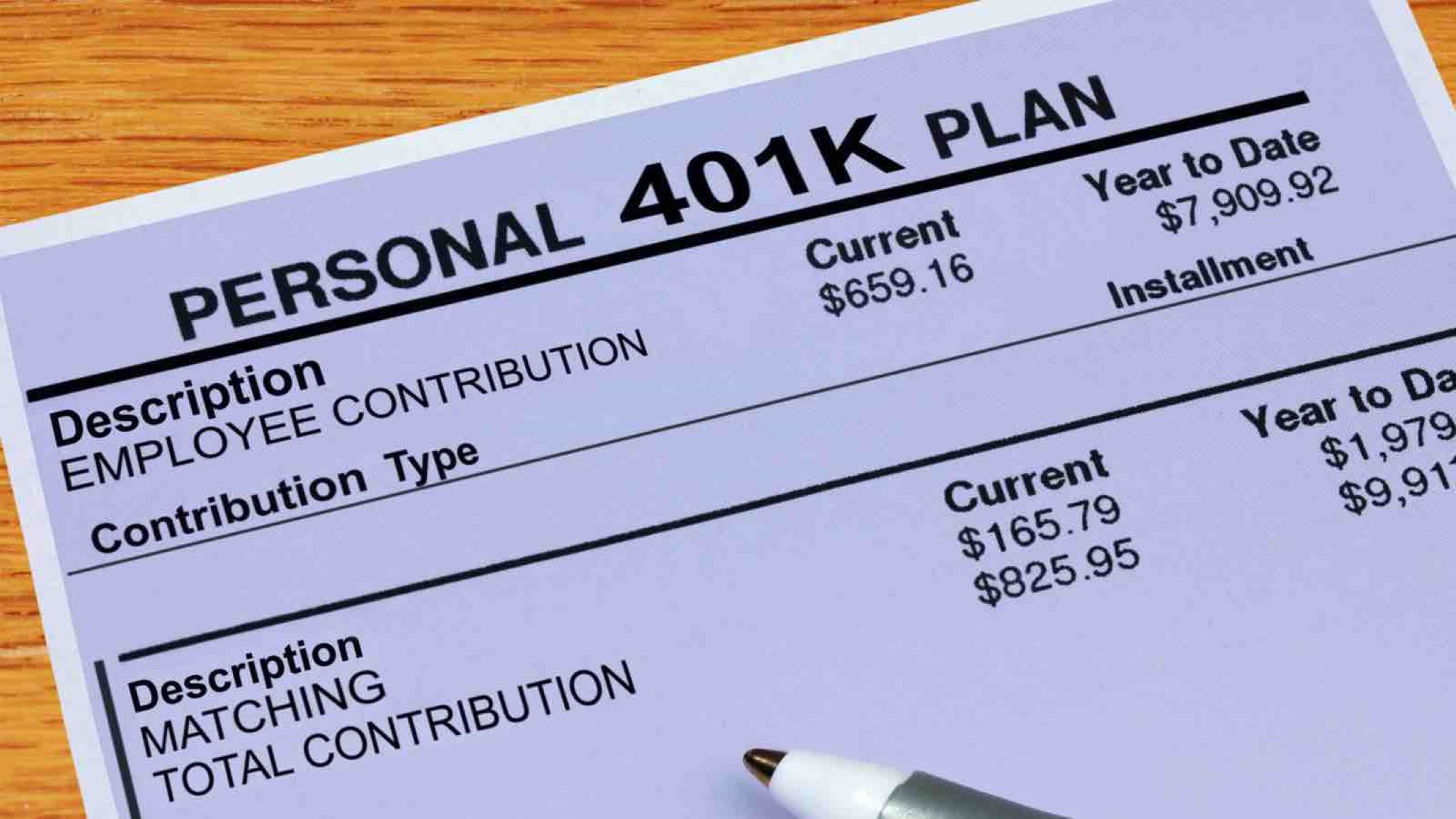

Finance
How Often Can I Change My 401K Contribution
Modified: December 30, 2023
Discover how often you can change your 401K contribution and take control of your finances. Make informed decisions to maximize your retirement savings.
(Many of the links in this article redirect to a specific reviewed product. Your purchase of these products through affiliate links helps to generate commission for LiveWell, at no extra cost. Learn more)
Table of Contents
- Introduction
- Understanding 401K Contributions
- Contribution Limits and Guidelines
- Can You Change Your Contribution Amount?
- Factors to Consider when Changing Contributions
- How Often Can You Adjust Your Contribution?
- Rules for Changing Contributions in Different Plans
- The Importance of Regularly Evaluating Your Contributions
- Conclusion
Introduction
When it comes to planning for your retirement, one of the most important financial tools at your disposal is your 401K. A 401K is a retirement savings plan offered by employers, allowing employees to contribute a portion of their salary on a pre-tax basis. These contributions, along with any employer match, are then invested, potentially growing over time and providing a substantial nest egg for retirement.
One question that often arises when it comes to 401K contributions is how often can you change them? Is it possible to adjust your contribution amount whenever you want, or are there restrictions in place?
In this article, we will explore the guidelines and considerations when it comes to changing your 401K contribution. We’ll delve into the factors to consider, the rules that govern contribution adjustments, and the importance of regularly evaluating your contributions.
By understanding the ins and outs of changing your 401K contribution, you can make informed decisions that align with your financial goals and optimize your retirement savings strategy.
Understanding 401K Contributions
Before we delve into the details of changing your 401K contribution, let’s first establish a clear understanding of what 401K contributions are and how they work.
When you enroll in a 401K plan, you have the option to allocate a portion of your pre-tax income towards your retirement savings. This contribution is deducted from your paycheck before taxes are calculated, which means you effectively lower your taxable income for the current year.
401K contributions are typically invested in a variety of available investment options, such as mutual funds, stocks, and bonds. These investments have the potential to grow over time, allowing your retirement savings to accumulate and compound.
Not only do 401K contributions have the potential for investment growth, but many employers also offer a matching contribution. This means that for every dollar you contribute, your employer will match a certain percentage, up to a specified limit. The employer match is essentially free money added to your retirement savings, making it a valuable benefit to take advantage of.
It’s important to note that there are limits to how much you can contribute to your 401K each year. The Internal Revenue Service (IRS) sets these limits to ensure fairness and prevent excessive tax-deferred retirement savings. By keeping track of these limits, you can make sure your contributions are within the allowed range.
By understanding the basics of 401K contributions and the potential for growth and employer match, you can see why it is an essential component of your retirement savings strategy. Now let’s explore the guidelines for making changes to your contribution amount.
Contribution Limits and Guidelines
When it comes to contributing to your 401K, it’s essential to be aware of the contribution limits set by the IRS. These limits are in place to ensure that individuals don’t abuse the tax advantages of the 401K plan and to regulate fair and equitable distribution of retirement savings.
For the year 2021, the maximum contribution limit for a traditional 401K is $19,500. This limit may increase in subsequent years due to inflation. It’s important to note that this limit applies to your personal contributions and does not include any employer match or profit-sharing contributions.
For individuals who are 50 years of age or older, there is a catch-up provision that allows for additional contributions. In 2021, the catch-up contribution limit is $6,500. This means that individuals who qualify for the catch-up provision can contribute up to a total of $26,000 for the year.
Employers, on the other hand, have a separate limit for their contributions. The total combined limit for personal and employer contributions for 2021 is $58,000, or 100% of the employee’s compensation, whichever is lower. This means that if your employer provides a generous match or profit-sharing contribution, it can help boost your overall retirement savings.
It’s important to review your 401K plan’s guidelines and consult with your human resources department to understand the specific contribution limits and guidelines that apply to your situation. This ensures that you stay within the allowed limits and maximize your retirement savings opportunity.
Can You Change Your Contribution Amount?
Yes, you can change your 401K contribution amount, but the frequency and process for making these changes may vary depending on the rules set by your employer and the type of 401K plan you have.
First and foremost, it’s important to understand that you cannot change your contribution amount on a daily or weekly basis. Most employers have established certain time frames during which you can make changes to your contributions. These time frames can vary and may be annual, quarterly, or even monthly.
To change your contribution amount, you will typically need to log into your 401K account or contact your plan administrator. There may be specific forms or online tools provided by your employer or the plan administrator that you need to use to initiate the change. It’s important to follow the instructions provided and provide accurate information to ensure the change is processed correctly.
In some cases, employers may allow immediate contribution changes, allowing you to adjust the percentage or dollar amount of your contributions at any time. However, other employers may have restrictions or waiting periods before changes can take effect.
It’s important to keep in mind that any changes you make to your contribution amount may have an impact on your take-home pay and tax withholding. If you increase your contributions, you will likely see a decrease in your net pay, as more of your income is directed towards your retirement savings. On the other hand, decreasing your contributions will result in higher take-home pay but may reduce the amount you are saving for retirement.
Additionally, if your employer offers a matching contribution, it’s important to understand the rules and guidelines for matching. Some employers may have a vesting schedule, meaning that you need to stay with the company for a certain period of time before you are entitled to the full employer match. If you decrease or stop your contributions, you may miss out on the full match during that period.
Before making any changes to your contribution amount, it’s recommended to carefully evaluate your financial situation, retirement goals, and any other financial obligations you may have. Consulting with a financial advisor can help you make informed decisions and ensure that your retirement savings strategy aligns with your overall financial plan.
Factors to Consider when Changing Contributions
When contemplating a change to your 401K contribution amount, it’s crucial to consider several key factors that can impact your financial situation and retirement savings goals.
1. Financial Goals: Evaluate your short-term and long-term financial goals. Determine how much you need to save for retirement and whether your current contribution amount is sufficient to meet those goals. If you need to increase your savings rate, consider adjusting your contribution accordingly.
2. Cash Flow: Assess your monthly cash flow and determine if you can afford to increase or decrease your contributions. Consider your current expenses, debts, and other financial obligations. Adjusting your contribution amount should be done in a way that does not strain your budget or leave you financially vulnerable.
3. Employer Match: Take into account any employer matching contributions available to you. Adjusting your contribution amount should consider maximizing your employer’s match, as it is essentially free money added to your retirement savings. Ensure you contribute at least the amount necessary to receive the full employer match.
4. Tax Implications: Understand the tax implications of increasing or decreasing your contributions. Contributions to a traditional 401K are made with pre-tax dollars, lowering your taxable income. Increasing your contributions can provide you with additional tax deductions. However, decreasing your contributions can result in higher taxable income and potentially higher tax liabilities.
5. Other Retirement Accounts: Consider whether you have other retirement savings accounts, such as an Individual Retirement Account (IRA) or a Roth IRA. Assess the allocation of your retirement savings across these various accounts and make adjustments to ensure a diversified and balanced portfolio.
6. Investment Performance: Evaluate the performance of your 401K investments. If your investments have been consistently underperforming, you may need to reassess your contribution amount and explore alternative investment options. Consult with a financial advisor or review available resources to make informed decisions regarding your investment strategy.
When considering a change to your contribution amount, it’s essential to strike a balance between your current financial situation and your long-term retirement goals. Regularly reassessing and adjusting your contributions can help ensure that you are on track to meet your retirement objectives.
How Often Can You Adjust Your Contribution?
The frequency at which you can adjust your 401K contribution amount depends on the rules and guidelines set by your employer and the type of 401K plan you have. While there is no one-size-fits-all answer, there are a few common scenarios to consider.
1. Annual Adjustment: Many employers have an annual open enrollment period during which you can make changes to your 401K contributions. This is typically the time when you can adjust your contribution percentage or dollar amount for the upcoming year. It provides an opportunity to review your financial goals and make any necessary adjustments to your retirement savings strategy.
2. Quarterly or Monthly Adjustments: Some employers allow for more frequent adjustments to your contribution amount. This could be on a quarterly or monthly basis, depending on the plan rules. These shorter intervals provide more flexibility for employees to react to changes in their financial situation or to make strategic shifts in their retirement savings plan.
3. Life Event Changes: In certain cases, you may be allowed to adjust your contribution amount outside of the regular enrollment periods. This can occur when you experience a significant life event such as getting married, having a child, or going through a divorce. Life event changes typically require documentation and verification to support the adjustment.
It’s important to note that even if your employer allows for more frequent adjustments, it doesn’t necessarily mean that you should change your contribution amount frequently. It’s advisable to approach contribution adjustments thoughtfully and only make changes when it aligns with your financial goals and circumstances.
Additionally, keep in mind that there may be processing time involved in updating your contribution amount. For example, if your employer processes payroll a few weeks in advance, any changes you make may take effect in the following pay period.
To determine how often you can adjust your contribution, review your 401K plan’s documentation or contact your HR department or plan administrator. They can provide you with the specific rules and guidelines regarding contribution adjustments for your plan.
Remember, when adjusting your contribution amount, consider the impact on your retirement savings, tax obligations, and financial goals. Regularly evaluate your contributions to ensure your strategy remains aligned with your changing needs and objectives.
Rules for Changing Contributions in Different Plans
While the general concept of changing 401K contributions applies to most plans, it’s important to note that different employers may have varying rules and guidelines regarding contribution adjustments. Here are a few common scenarios to consider:
1. Traditional 401K Plans: Many employers offer traditional 401K plans, where employees can make pre-tax contributions. In these plans, contribution adjustments typically follow the guidelines set by the employer, such as an annual enrollment period or quarterly review. Employers may provide online tools or specific forms for employees to submit their desired contribution changes.
2. Roth 401K Plans: Some employers offer Roth 401K plans, where employees make after-tax contributions. These plans have distinct rules regarding contribution adjustments, similar to traditional 401K plans. However, it’s important to note that adjusting your contributions in a Roth 401K may have tax implications, as withdrawals in retirement are tax-free.
3. Safe Harbor 401K Plans: Safe Harbor 401K plans are designed to ensure that highly compensated employees do not disproportionately benefit from the plan. In these plans, employers are required to make a specific matching contribution, often immediately vested, for all eligible employees. Contribution adjustments in Safe Harbor plans may have additional restrictions due to the mandatory employer match.
4. Automatic Increase programs: Some employers offer automatic increase programs, also known as auto-escalation. These programs automatically increase an employee’s contribution amount by a set percentage each year, unless the employee opts out or makes a different selection. While employees can still make additional adjustments above the automatic increase, the program ensures that contributions are consistently increasing over time.
5. Simple 401K Plans: Simple 401K plans are designed for small businesses. With these plans, employers must match employee contributions or make non-elective contributions. Rules for changing contributions in a Simple 401K plan may vary, but generally, employees have the ability to adjust their contributions annually or during a limited period each year.
It’s important to familiarize yourself with the specific rules and guidelines for changing contributions in your particular 401K plan. Review the plan documents, consult with your HR department, or speak with your plan administrator to understand the requirements and options available to you.
Remember, regardless of the plan type, it is crucial to assess your financial situation, retirement goals, and tax implications before making any contribution adjustments. Regularly evaluate your contributions to ensure they align with your changing needs and optimize your retirement savings strategy.
The Importance of Regularly Evaluating Your Contributions
Regularly evaluating and reviewing your 401K contributions is a crucial step in ensuring that your retirement savings strategy remains effective and aligned with your financial goals. Here are a few reasons why regular evaluation is important:
1. Adjusting to Changing Financial Circumstances: Life is dynamic, and your financial situation can change over time. Regularly evaluating your contributions allows you to adjust your savings strategy to reflect changes in income, expenses, and financial goals. Whether it’s a salary increase, job change, or new financial obligations, evaluating and adjusting your contributions can help ensure you continue to save an appropriate amount for retirement.
2. Maximizing Employer Match: If your employer offers a matching contribution, regularly evaluating your contributions ensures that you are taking full advantage of this benefit. By contributing at least the amount required to receive the maximum match, you’re essentially earning free money towards your retirement savings. Failing to regularly evaluate and adjust your contributions can mean missing out on valuable employer contributions.
3. Staying on Track for Retirement Goals: Regular evaluation of your contributions allows you to assess whether you are on track to meet your retirement goals. By comparing your current contributions with your projected retirement needs, you can determine if you need to increase or decrease your savings rate. Making adjustments as needed will help ensure that you are making progress towards your desired retirement lifestyle.
4. Managing Tax Implications: Regular evaluation of your contributions helps you manage the tax implications of your retirement savings. Contributions to a traditional 401K lower your taxable income, potentially reducing your tax liabilities. By reviewing and adjusting your contributions, you can optimize your tax strategy and take advantage of available tax benefits. If you’re considering a Roth 401K option, regularly evaluating your contributions can help you assess the impact on your current tax obligations and future tax-free withdrawals in retirement.
5. Reviewing Investment Performance: Your 401K contributions are typically invested in various funds or assets. Regular evaluation allows you to review the performance of your investments and make necessary adjustments. If certain investments consistently underperform, you may decide to reallocate your contributions to other options with better potential for growth. Evaluating your contributions gives you the opportunity to fine-tune your investment strategy and maximize returns.
6. Taking Advantage of Contribution Limit Increases: The IRS periodically adjusts contribution limits for retirement savings accounts to account for inflation. Regular evaluation helps you stay informed about these changes and take advantage of increased contribution limits. Increasing your contributions when the limits are raised allows you to maximize your tax-advantaged retirement savings potential.
By regularly evaluating your 401K contributions, you can ensure that your retirement savings strategy remains relevant and effective. It allows you to adapt to changes, optimize tax benefits, and make informed decisions to help secure your financial future.
Conclusion
Understanding and effectively managing your 401K contributions is crucial for achieving your retirement savings goals. While the frequency at which you can change your contribution amount varies depending on your employer and plan, the ability to make adjustments allows you to align your savings strategy with your financial situation and goals.
When considering changes to your contributions, it’s important to evaluate key factors such as your financial goals, cash flow, employer match, tax implications, and investment performance. Balancing these considerations ensures that your contributions are optimized to meet your retirement needs while remaining within contribution limits set by the IRS.
Regularly evaluating your contributions is essential for staying on track towards your retirement goals. Adjusting to changing financial circumstances, maximizing your employer match, managing tax implications, and reviewing investment performance are all key reasons to periodically assess and modify your contributions.
Remember to familiarize yourself with the specific rules and guidelines of your 401K plan regarding contribution adjustments. Consult with your HR department or plan administrator if you have any questions or need clarification.
Ultimately, by taking an active role in managing your 401K contributions, you can optimize your retirement savings, maximize potential employer contributions, and work towards realizing your desired retirement lifestyle.














